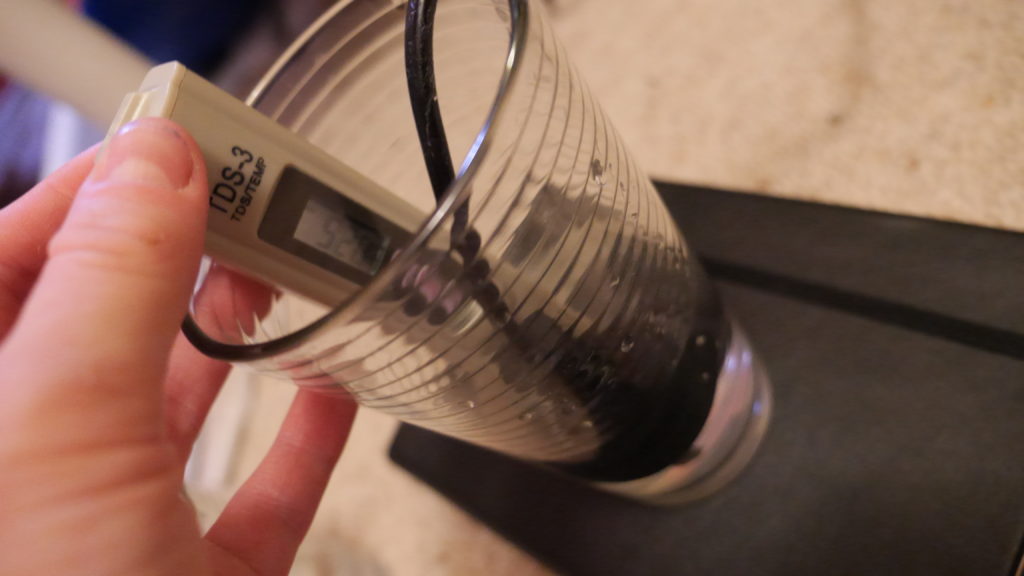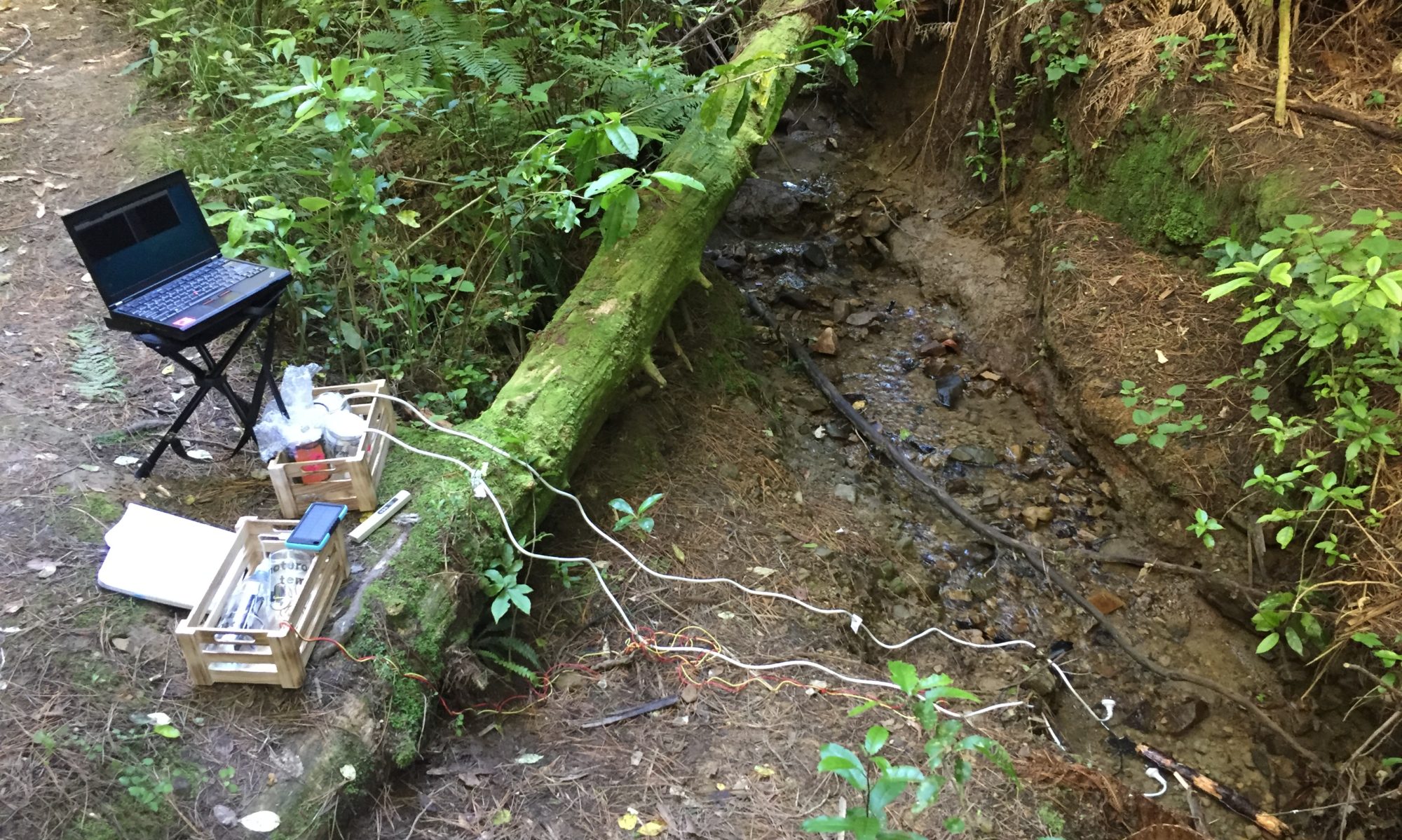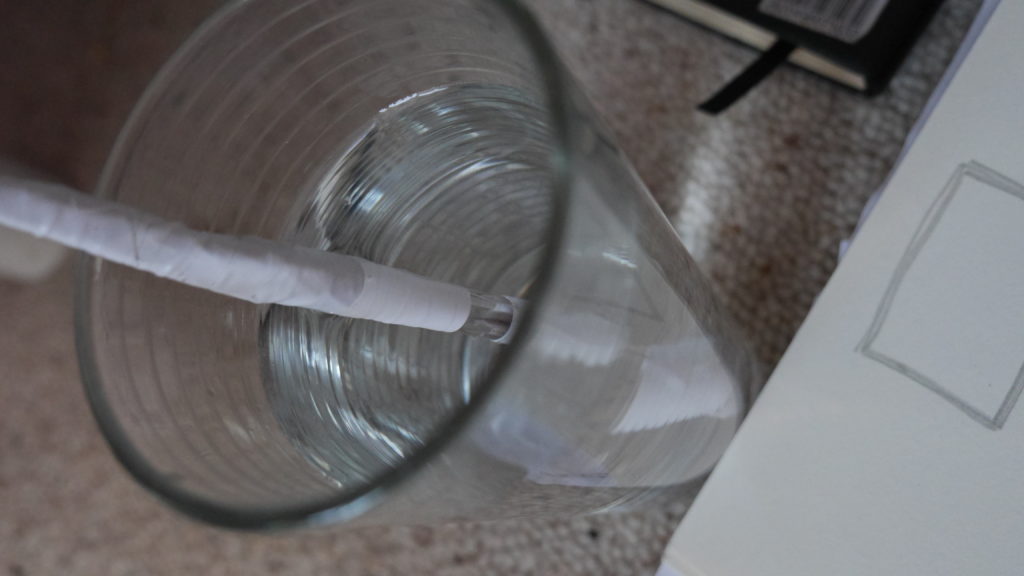
EC Version 1: Pens, Nichrome and too much tape
The first EC meter I built was based on the instructions by Practical Maker (2011). The probe involves two Nichrome resistance wire attached to an empty pen tube and covered with electrical tape.
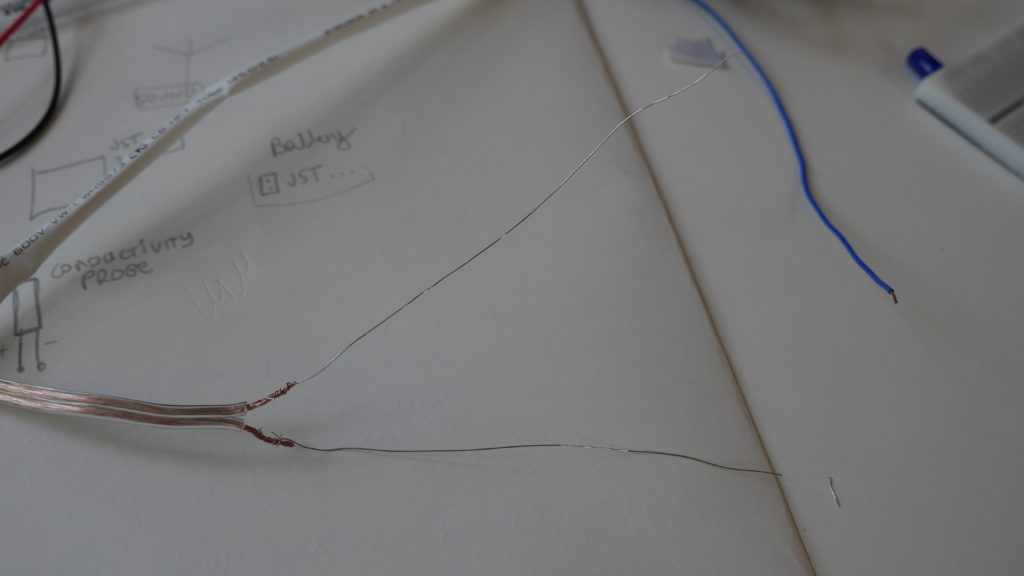
The Nichrome wires are soldered to stranded core copper wire from an audio cable and connect via a 10kΩ resistor to the analog input of a Wemos D1 mini.
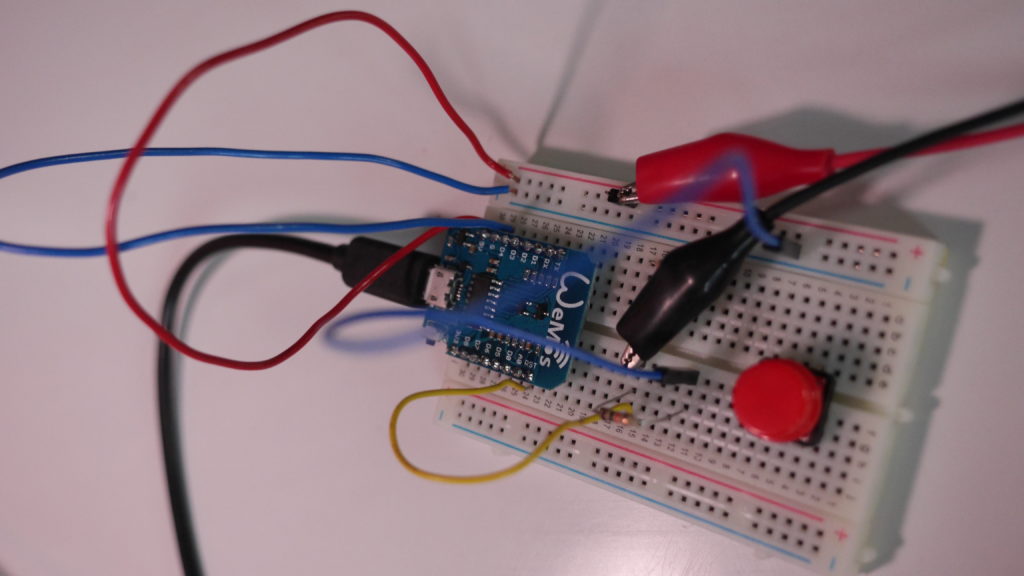
For testing I would use the Wemos D1 mini in combination with a small breadboard and jumper wires and header pins connecting to alligator cables to hook up my probe to the micro controller and my computer.
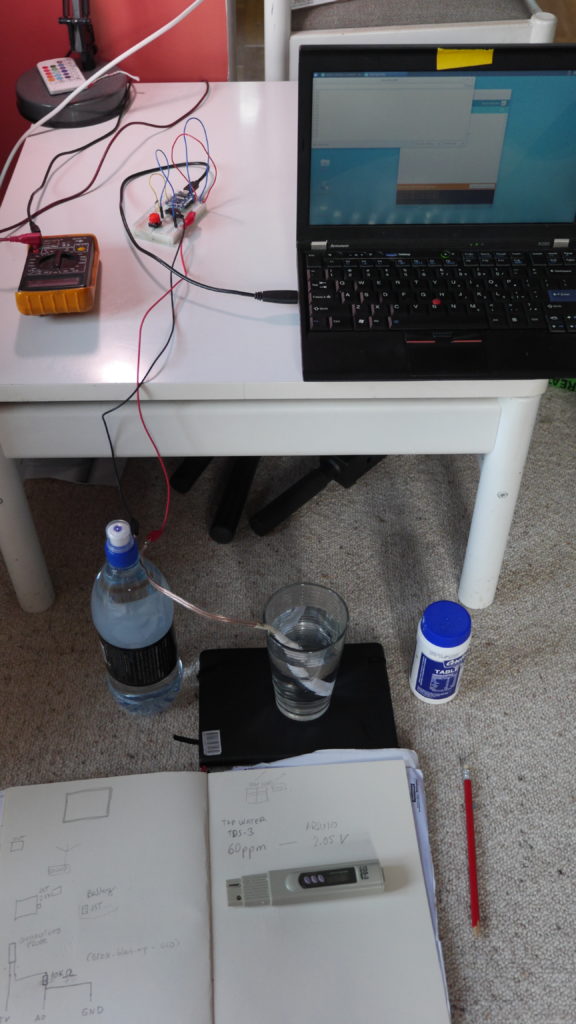
For the test setup I initially submerged the probe in a glass of distilled water. I would read out the voltage via the Arduino Serial Monitor and note the voltage value down in my notebook. I would also take a reading with my TDS-3 meter and note the value down next to the voltage. I would add a measured amount of salt to the water solution and repeat this process.
While the initial voltage readouts looked promising, the material assembly of the probe proved problematic and generated inconsistent voltage readings.

The electrical tape trapped water in between the multiple layers which would generate inconsistent readouts. The probe would also still show conductivity once I lifted the probe from the water solution, which would only slowly drip from the parts and also slowly lift and move the electrical tape. To sum it up, this probe design was not only quite complex and flimsy, but also unreliable in terms of readouts. This meant I needed to look for another solution.
EC Version 2: Repurposing a wall plug
In a very detailed blog post Ratcliffe (2015) described how to build a EC meter for Arduino for $3. His solution involved repurposing a Type A Two Prong american plug. I took one old New Zealand plug and connected it to my previous setup.
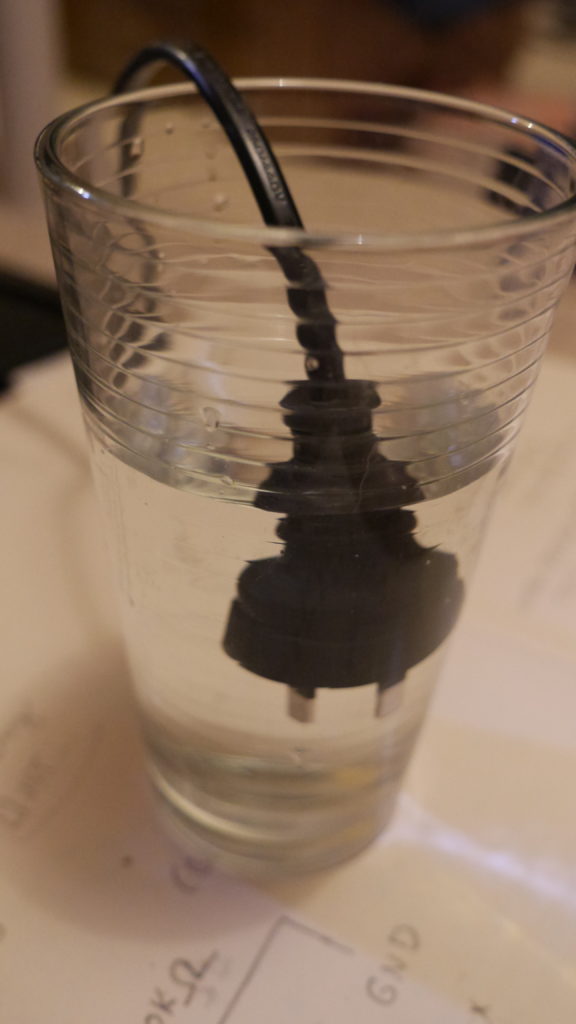
The appearance of a power plug suspended in a glass of water looked very strange from the start. However, the initial tests showed that the plug was an easy, hassle-free way of generating reliable voltage readings alongside the TDS meter.
